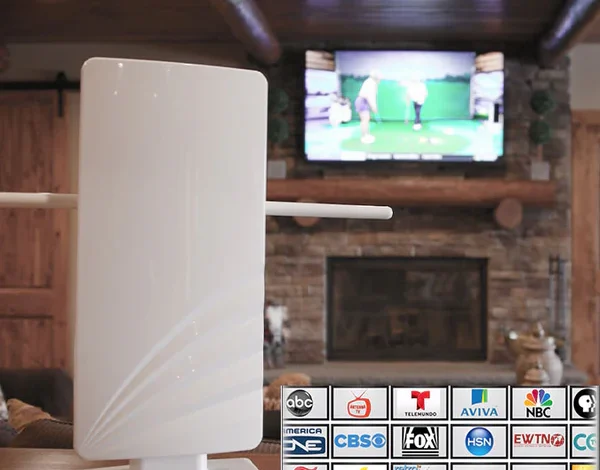What You Need to Know About Antenna Accessories for Better TV Quality

In the era of streaming services and smart TVs, traditional television broadcasting still holds its ground due to its reliability and cost-effectiveness. For those who rely on antennas for their TV reception, understanding the role of antenna accessories is crucial for achieving optimal picture quality. This guide will walk you through everything you need to know about antenna accessories, helping you enhance your TV viewing experience.
Understanding TV Antennas
Types of TV Antennas
There are two primary types of TV antennas: indoor and outdoor. Indoor antennas are generally easier to install and are suitable for locations with strong signal reception. Outdoor antennas, on the other hand, are larger and can capture signals from a greater distance, making them ideal for rural or suburban areas where signal strength might be weaker.
- Indoor Antennas: These are compact and designed to sit on or near your TV. They are suitable for urban environments with strong signals.
- Outdoor Antennas: These are mounted outside your home, usually on the roof or in the attic, and are capable of picking up signals from a greater distance. They are more effective in areas with weak signal reception.
Factors Affecting Antenna Performance
Several factors can affect the performance of your TV antenna, including:
- Location: Proximity to broadcast towers and geographical obstacles such as hills and buildings.
- Antenna Placement: Higher and unobstructed placements generally offer better reception.
- Signal Interference: Electronic devices, weather conditions, and other signals can interfere with TV reception.
Essential Antenna Accessories
To maximize the performance of your TV antenna, various accessories can be used. These accessories help to amplify the signal, reduce interference, and ensure that your TV receives the best possible picture quality.
Antenna Amplifiers
Signal Boosters
Signal boosters, or amplifiers, are devices that increase the strength of the signal received by the antenna. They are particularly useful in areas where the signal is weak or where the antenna is placed far from the TV.
- Pre-Amplifiers: Installed close to the antenna, these amplifiers boost the signal before it travels through the cable to your TV, minimizing signal loss.
- Distribution Amplifiers: Used when the signal is split to multiple TVs, these amplifiers ensure that each TV receives a strong signal.
When to Use an Amplifier
Using an amplifier is beneficial when:
- You have long cable runs between the antenna and your TV.
- You are splitting the signal to multiple TVs.
- You are in a location with weak signal reception.
Signal Splitters
Signal splitters allow you to distribute the antenna signal to multiple TVs. While this is convenient, it can also weaken the signal. Choosing the right splitter and using it correctly is essential for maintaining signal quality.
- Types of Splitters: Splitters come in various configurations, such as 2-way, 3-way, or 4-way, depending on how many outputs you need.
- Quality Splitters: High-quality splitters are designed to minimize signal loss and ensure that each TV receives a strong signal.
Coaxial Cables
The quality and length of the coaxial cable connecting your antenna to your TV can significantly impact signal quality.
Choosing the Right Coaxial Cable
- Cable Quality: Look for high-quality, low-loss coaxial cables with good shielding to protect against interference.
- Cable Length: Use the shortest cable possible to reduce signal loss. If a long cable is necessary, consider using a pre-amplifier.
Surge Protectors
Surge protectors are essential for protecting your antenna and TV from power surges, which can occur during thunderstorms or due to electrical faults. A surge protector with coaxial cable inputs ensures that your equipment is safeguarded.
Antenna Rotators
Antenna rotators allow you to change the direction of your antenna to receive signals from different broadcast towers. This is especially useful in areas with multiple broadcasting sources.
- Remote Control: Many rotators come with remote controls, making it easy to adjust the antenna direction from inside your home.
- Motorized Rotators: These provide precise control over the antenna’s position, ensuring optimal signal reception from various directions.
Mounting Equipment
Properly mounting your antenna is crucial for optimal performance. Various mounting equipment options are available to suit different installation needs.
- Masts and Poles: These elevate the antenna above obstructions, improving signal reception.
- Brackets and Mounts: Secure the antenna to your roof, wall, or other structures.
Tips for Improving TV Reception
Even with the best accessories, there are additional steps you can take to improve your TV reception.
Optimal Antenna Placement
- Higher is Better: Place your antenna as high as possible, preferably on the roof or in the attic.
- Clear Line of Sight: Ensure there are no obstructions, such as trees or buildings, blocking the signal path.
Regular Maintenance
- Check Connections: Regularly inspect and tighten all connections to prevent signal loss.
- Clean the Antenna: Dust and debris can accumulate on the antenna, affecting its performance.
Rescan for Channels
Periodically rescanning for channels ensures that your TV receives all available signals, especially if broadcast towers have changed frequencies or new channels have been added.
Troubleshooting Common Issues
Weak Signal
If you experience a weak signal, consider the following steps:
- Check Connections: Ensure all connections are secure and that there are no damaged cables.
- Use an Amplifier: Install a signal booster if the signal is consistently weak.
- Reposition the Antenna: Try moving the antenna to a different location or adjusting its direction.
Interference
Interference can cause pixelation or loss of signal. To reduce interference:
- Move Electronic Devices: Keep electronic devices away from the antenna and coaxial cables.
- Use Shielded Cables: High-quality, shielded coaxial cables can reduce interference from other electronic devices.
Multiple TVs
When using one antenna for multiple TVs, a splitter and distribution amplifier may be necessary to ensure each TV receives a strong signal.
Enhancing your TV reception with the right antenna accessories can significantly improve your viewing experience. By understanding the types of antennas available, the essential accessories needed, and best practices for installation and maintenance, you can achieve the best possible picture quality. Whether you are dealing with weak signals, interference, or multiple TV setups, the right combination of accessories and techniques will ensure that you enjoy clear and reliable television broadcasts.



